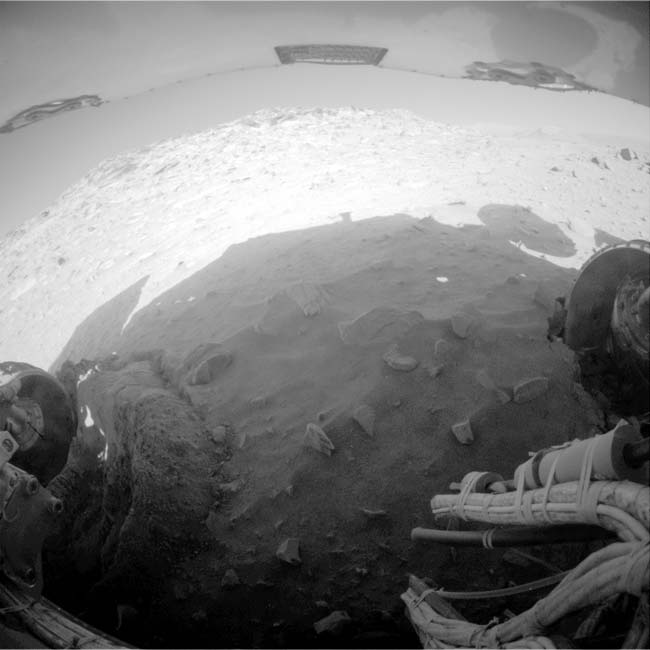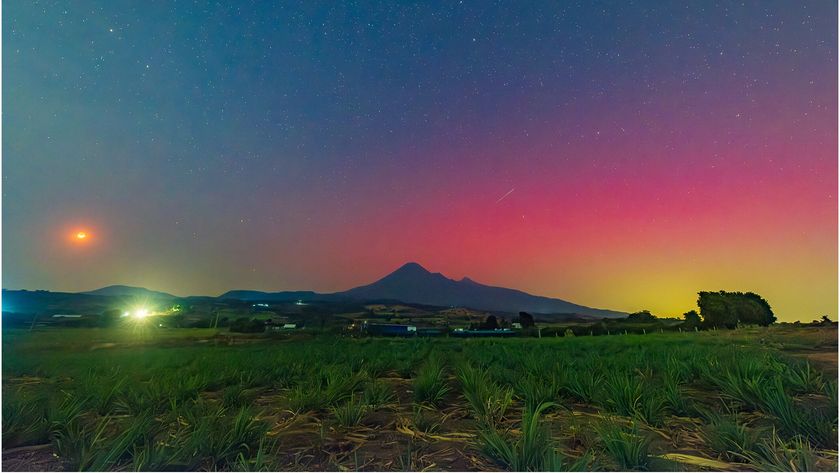Mars Rovers Set to Break Red Planet Record

A historic milestone could be made on Mars this week.
On Thursday, NASA's beleaguered Spiritrover could become the longest-running mission on the surface of Mars,surpassing the Viking 1 lander's record of six years and 116 days of operationon the Martian surface ? if it's still alive, that is.
Spirit fell silent on Mars on March 31, when it skipped aplanned communications session with Earth. It may be hibernating through theharsh Martian winter. But even if Spirit doesn't survive, its robotic twinOpportunity is poised to break the Mars mission record in early May.
Beating Viking's record, which NASA set in the 1980s, wouldbe a major feat for a rover the size of a golf cart that was only supposed tolast for three months and spent the past year stuck in Martian sand. Themilestone would also be a welcome surprise to the team of scientists andengineers that have been commanding Spirit for these past six years.
"Being part of the team that will break the VL1 [VikingLander 1] record will be exciting," said Ray Arvidson of theWashington University in St. Louis, who led the Viking Lander Imaging Team wayback when and now serves as a member of the Spirit science team. "It meansto me personally that I will have participated in two historical events."
Undying Spirit and Opportunity
Spirit and its robotic twinsister Opportunity landed on opposite sides of Mars in 2004 ? Spiritbounced onto the surface on Jan. 4, while Opportunity landed a few weeks lateron Jan. 25 Eastern Time.
Get the Space.com Newsletter
Breaking space news, the latest updates on rocket launches, skywatching events and more!
Both rovers were initially slated for just a 90-day missionto explore the geology and chemistry of their respective landing sites. Butthey blew past those deadlines and have continued their missions for far longerthan mission engineers ever thought possible.
They passed their six-year marks in January of this year. Thatmeans right now both rovers are in the midst of their seventh Earth year onMars.
"By lasting such a long time, the rovers have been ableto accomplish far more science and exploration than we ever expected, andthat's a wonderful thing. We're very proud of that," said Steve Squyres, leadscientist for the Mars Exploration Rover Project at Cornell University inIthaca, NY.
In January of this year, after months of trying to rescueSpirit from a sand trap it rolled into in May 2009, NASA rechristened the roveras a stationary lander. Opportunity, meanwhile, is doing fine and headed to agiant crater called Endeavour on the Martian plains of Meridiani Planum.
Rovers vs. Vikings
Viking 1 was also a hardy spacecraft, lasting from the timeit touched down on Mars on July 20, 1976 until contact was lost in November1982, putting its time in operation on Mars at 6 years, 116 days. [DeadMars spacecraft.]
The exact hour when Viking ceased operation is debatable,but NASA officials are marking April 29 as the day that Spirit will matchViking 1's record.
But NASA's Viking landers (there were two) used a radioisotopethermoelectric generator ? which converts heat from decaying nuclear materialinto electricity ? for power. Spirit and Opportunity use solar arrays that relyon available sunlight and periodic dust storms to keep them clean.
Of course, Spirit has been out of communication for the pastfour weeks after entering a low-power hibernation mode once winter sat in andtemperatures dropped along with the sun dipping in the sky, leaving Spirit withlittle available power.
Because the rover is out of contact, mission managers maynot know for several weeks whether or not Spirit survived and was still inoperation on its record-setting day, and not before Opportunity matches thesame record.
"A communication from Spirit on April 29 or later wouldbe a confirmation that it has matched or exceeded VL1's longevity," saidGuy Webster, a spokesman at NASA's Jet Propulsion Laboratory in Pasadena,Calif. "That might not happen before Opportunity reaches the VL1 longevitymark, which will be on May 20."
Battle of the Mars-bots
If Spirit does survive the winter, it will hold the recordover Opportunity, of course.
While Arvidson is doubtful that Spirit will break therecord, pointing out how long the rover will have to stay in a low-power mode,Squyres is more optimistic.
"You could lose a lot of money betting against thatrover," he told SPACE.com, alluding to the number of times the rover hasimprobably survived tough conditions on the Martian surface.
If the Spiritrover does wake up come spring, it will continue to investigate the area inwhich it became mired, checking out new soil targets in the fortuitouslygeologically-interesting spot.
How long Spirit, or Opportunity, might hold the longevityrecord is anyone's guess, and will at least hold out until the next Marssurface explorer, the Mars Science Laboratory (aka Curiosity) arrives at thered plant. Curiosity isn't slated to launch until 2011.
Even if Curiosity becomes the next rover to match the Viking1 record, it will then have to catch up to whatever new benchmark the MERrovers set as they near their 7th anniversaries, and possibly even make it tolater "birthdays."
- Images? Mars: A Spacecraft Graveyard
- MostAmazing Mars Rover Discoveries
- Marsas Seen by Spirit and Opportunity, Part2
Join our Space Forums to keep talking space on the latest missions, night sky and more! And if you have a news tip, correction or comment, let us know at: community@space.com.

Andrea Thompson is an associate editor at Scientific American, where she covers sustainability, energy and the environment. Prior to that, she was a senior writer covering climate science at Climate Central and a reporter and editor at Live Science, where she primarily covered Earth science and the environment. She holds a graduate degree in science health and environmental reporting from New York University, as well as a bachelor of science and and masters of science in atmospheric chemistry from the Georgia Institute of Technology.











